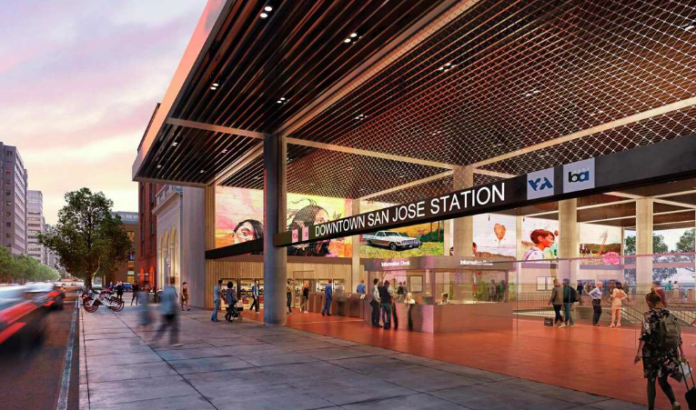California Construction News staff writer
An independent study has confirmed that the single bore tunnel method an be used for the BART (Bay Area Rapid Transit) Silicon Valley Phase II project, according to Santa Clara Valley Transportation Authority (SCVTA).
The six-mile extension project—which includes three underground stations (28th Street/Little Portugal, Downtown San José, and Diridon), one at-grade station (Santa Clara), a maintenance facility, and five miles of subway tunnel—will expand BART service from the Berryessa Transit Center in northeast San José through downtown San José into the city of Santa Clara.
BART and the Santa Clara Valley Transportation Authority say construction will begin construction of BART’s downtown San Jose extension next year.
More than four miles of tunnel will be built under downtown San Jose along Santa Clara Street, using boring instead of “cut and cover” construction.
“What we deeply care about is building the best project, the most equitable project ever that connects the Bay Area and our communities together in a way that we would have never believed possible,” BART Board Director Janice Li said in a news release.
Subterranial station designs feature a single platform sandwiched between parallel tracks for trains traveling in either direction, a design similar to BART stations like that of Embarcadero station in San Francisco.
The project’s design build contractor Kiewit Shea Traylor Joint Venture, or KST – would widen the proposed tunnel bore by roughly five feet and is expected to be easier to maintain, cheaper to construct and more efficient to access both for riders and emergency responders.
The single platform is also expected to improve ventilation for the tunnel, according to Takis Salpeas, the project director for the San Jose extension, because it will include a 13-foot by 17-foot cavity under the tracks.
The San Jose and Santa Clara extension is the second phase, expected to cost about $6.8 billion and be completed by 2028.
Funding is expected to come from federal grants, either from the U.S. Federal Transit Administration or other sources within the U.S. Department of Transportation.














